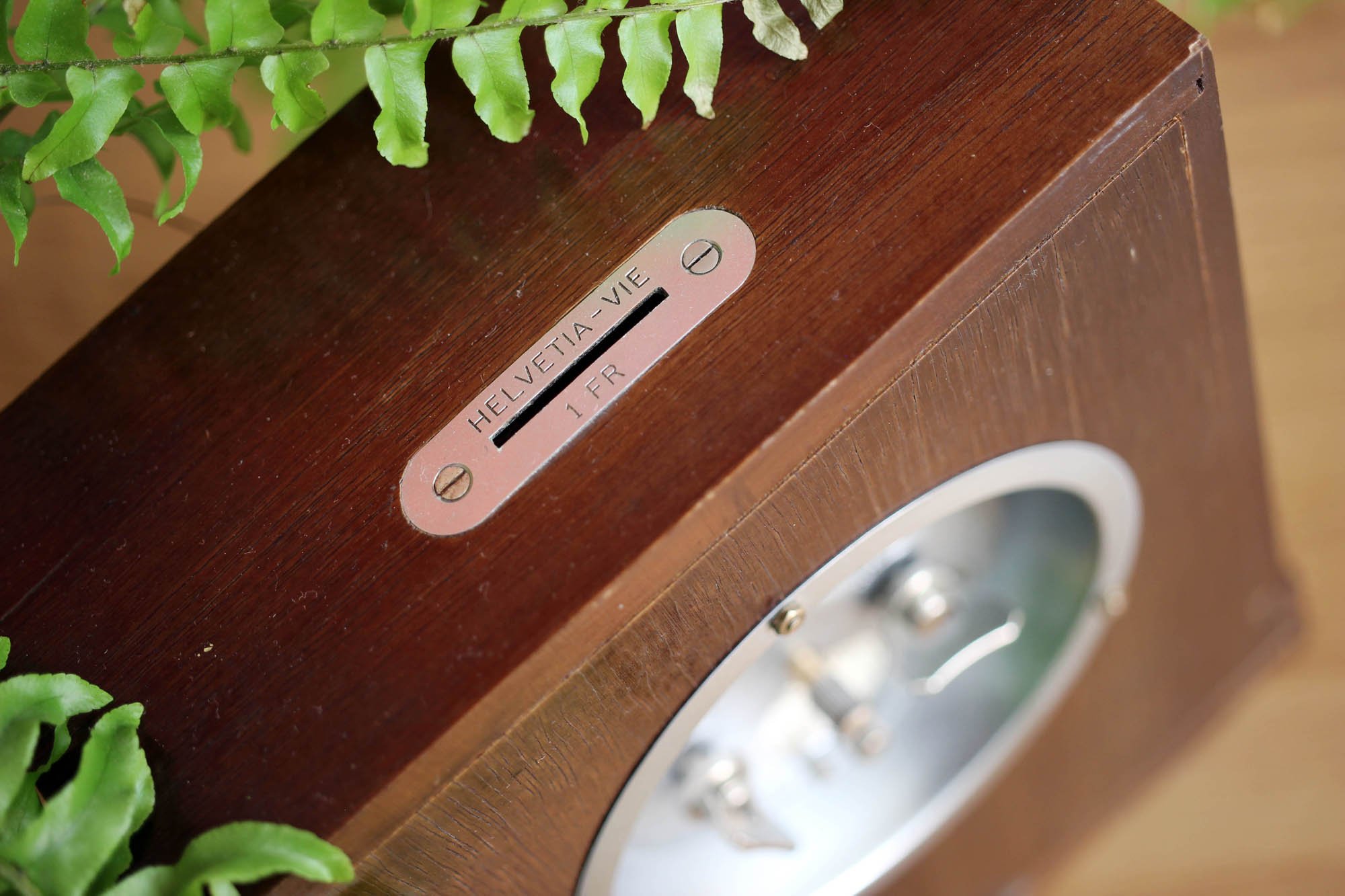March Vintage Inspiration: Zenith Piggy Bank Clock
The Zenith Piggy Bank proves marketing genius lives for centuries. This is the story of a clock that helped people save money.
I met my friend Matej a few weeks after he lent me his Seiko Superior to be reviewed for 52Mondayz. I was about to give him the Seiko back when my subconscious autopilot threw a mandatory question at him. The one all curious watch nerds give and get all the time: “Any new vintage additions to your watch collection?” As proven on multiple occasions, I didn’t even have to wait until he opened his mouth. I knew immediately I would hear something that would keep me from sleeping.
Zenith Piggy Bank
Matej mumbled first about some Seiko watches he likes a lot, then jumped over to a great deal he made on Cartier, and finished with three words on an old Zenith clock that works as a piggy bank. When he then started talking about his Seiko again, I stopped him. “What did you just say? A vintage piggy bank clock?!” Quite surprised I picked on this one, Matej pulled out his phone and showed me a brick-like Zenith. The only thing he knew was that there is a counter from zero to 20 at the back panel. The number jumps up with every single coin he throws in.
Instant idea
Without studying the story behind the Zenith piggy bank clock I drew up a plan right on the spot. That time I didn’t even think there might be an interesting backstory to it. I just liked the idea and decided to get the clock and use it to teach my daughter how to save money. Something like creating a small father-daughter ritual as we sink a Euro into it together every evening. I see her learning to count as we keep track of our savings each month.
Impatience is my problem
Right after the lunch I hopped behind the screen and started searching for one. With zero results, I called it a day. The same scenario repeated a few more times when the Zenith piggy bank clock resurfaced in my mind. I think after the fourth unsuccessful attempt I just picked up the phone and texted my friend if there is any chance he would sell it to me. To my surprise, he agreed. He said he doesn’t use it much and his girlfriend doesn’t like it as it is too loud. Lesson learned? Never be afraid to try your luck, the worse thing that can happen is getting a NO.
Insurance history lesson
What came next was a big surprise. When I brought the clock home and started digging through French and Italian forums, I found that the clock served the exact same purpose I spontaneously bought it for. In the 1920s and 1930s, life insurance companies were collecting payments in person. Yeah, no direct debit or bank transfers. Once a month or every two weeks, an insurance agent went to visit his customers. He often collected nothing, as people had other unpredictable costs they had to cover.
It was the inefficiency of collecting regular payments was the real problem that inspired the marketing genius behind this clock.
A clock that would work only if it was fed a coin every single day. The piggy bank clock, that came as a gift from the insurance company La Travail, was a prestigious accessory to any household in the 1930s. Failing to keep it ticking would be a great shame. Restarting it was not possible, as the key to the lock was kept by the insurance agent only. Regular daily contributions also kept the family happy (and aware of time), as they ensured a full accountable sum ready to be paid on the day the agent visited. All without experiencing a big one-off monthly payment.
Origins
If my research was correct, the early execution of this idea came with the La Pendastrava clock from the previously mentioned insurance company La Travail. The mechanism was pretty simple. There was a simple sub-assembly attached to the movement that was controlled by a coin falling through the slot on the top. If you forgot to contribute regularly once a day, the movement was stopped.
Once installed in the client’s home, the clock still remained property of the insurance company.
After one year of payments, even if the insured stopped contributing, he could keep the clock. The original La Pendastrava for La Travail had three major variations. Based on the program the insured signed for, he was supposed to save one, two, or five Francs a day.
https://vimeo.com/398230514
Zenith going wild
In comes Zenith, that saw this as an opportunity and created their own saving clock to be sold for other insurance houses. Besides a huge full date clock, there was the compact basic brick-size model that you see today. Interestingly enough, the name of the insurance company was not promoted that much at all. As you can see on the detail picture, the company only appears in the metal frame the slot of the piggy bank. According to the Zenith history book, Zenith produced approximately 200,000 copies between 1925 and 1969. With the insurance company branding pushed back big time, Zenith scored big time by becoming a popular and recognized household name.
Helvetia-Vie 1FR
What I like most about this clock is the compact size. On a picture without any objects around to contrast, it looks huge. The opposite is true. With a 16 x 8cm base it’s truly space-efficient. As the height does not exceed your typical book, it doesn‘t kill your living room. Usually, table or mantle clocks are sunken into massive surrounds full of ornamentation. That kind of design makes the mounting, rather than the clock itself, the focus. In this basic Zenith piggy bank, the 11cm dial spans nearly to the edge and underlines the practical and efficient design that is set above the frame aesthetic. The big round dial wrapped in such a boxy shape is contrastingly beautiful.
The alarm is a bonus
The metal plate around the slot suggests that the clock sat in a household signed for the lowest program saving one Franc a day. The dial has developed a nice grey-ish patina. Seeing the oversized blued Breguet hands is a new and soothing experience. The same can be said for the alarm sound. Before I set it, I expected the sound would make my neighbors call the police. To my surprise, the sound is very gentle. It’s as if a Dacia driver heard the fasten seat-belt warning in a BMW for the first time if you know what I mean…
https://vimeo.com/398227850
Shotgun notes
The Zenith piggy bank clock is quite precise. The decoration over the plywood is not particularly good quality, but if you grab a well-preserved piece, it’s not bad. The beautifully curved Plexiglass adds a touch of class to proceedings. I haven’t figured out why the counter only counts to 22, so please feel free to educate me if you do. To remove the coins you need to take out the bottom plate. There you can also find a lever for resetting the counter back to zero. Below you can enjoy the coin counting moment. It’s magically fast.
Few problems
We don‘t have Francs, but Euros where we live. And 5 cents seems to be the nominally biggest coin that gets through the slot. This sounds motivating only if you set your (and your daughter’s) mind to an ice-cream as the top saving goal. After an ice-cream goal, I don‘t have the urge to demount the metal slot plate anymore. I originally planned on having an identical copy with a wider slot customized. Which now brings me to my second problem. My daughter is only eight months old and she’s not participating as actively as I expected. We shall see in a few years…

















